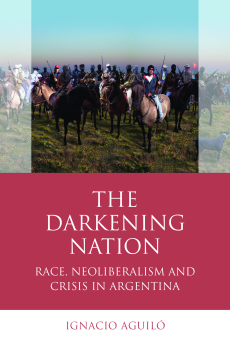
Additional Information
Book Details
Abstract
At the turn of the twenty-first century, Argentina was in the midst of its worst economic crisis in decades, the result of years of drastic neoliberal reforms. This book looks at the way ideas about race and nationhood were conveyed during this period of financial meltdown and national emergency, examining in particular how the neoliberal crisis led to the critical self-questioning of the dominant imaginary of Argentina as homogeneously white – allegedly the result of European immigration and the extinction of most indigenous and black people in the nation-building age. The Darkening Nation focuses on how the self-examination of racial and national identity triggered by this crisis was expressed in culture, through the analysis of literary texts, films, artworks and music styles. By considering a wide range of artistic and cultural products, and different forms of racial identity and difference (white, indigenous, Afro-descendant, immigrant and negro as it is understood in local contexts), this study constitutes a timely addition from a literary and cultural studies perspective to recent academic enquiry into race and nation in Argentina.
Table of Contents
| Section Title | Page | Action | Price |
|---|---|---|---|
| Cover | Front Cover | ||
| Title Page | iii | ||
| Copyright Page | iv | ||
| Contents | vii | ||
| Series Editors’ Foreword | ix | ||
| List of Figures | xi | ||
| Acknowledgements | xiii | ||
| Introduction | 1 | ||
| Exceptionalism | 10 | ||
| Migration | 11 | ||
| Space | 15 | ||
| Multiculturalism | 17 | ||
| Structure and texts | 20 | ||
| Chapter 1: Neoliberalism and its crisis | 25 | ||
| Chapter 2: The historical construction of whiteness in Argentina | 38 | ||
| Chapter 3: Facing darkness in the literature of the crisis | 51 | ||
| Literary production and the crisis | 52 | ||
| ‘Asterix, el encargado’ | 57 | ||
| La Villa | 62 | ||
| Cucurto | 67 | ||
| Chapter 4: ‘A Bolivian walks into a bar …’: race in New Argentinian Cinema | 84 | ||
| The renovation of Argentinian cinema | 86 | ||
| Bolivia | 91 | ||
| Copacabana | 100 | ||
| Chapter 5: Amerindians, fashion models and picketeers | 109 | ||
| Huellas | 111 | ||
| La conquista del desierto | 123 | ||
| Grupo de Arte Callejero (GAC) | 132 | ||
| Chapter 6: Cumbia villera and the new racialised marginality | 141 | ||
| Cumbia music in Argentina | 143 | ||
| The boom of cumbia villera | 146 | ||
| Racialising the villero youth | 149 | ||
| Afterword | 166 | ||
| Notes | 174 | ||
| Works cited | 203 | ||
| Index | 225 | ||
| Back Cover | Back Cover |
